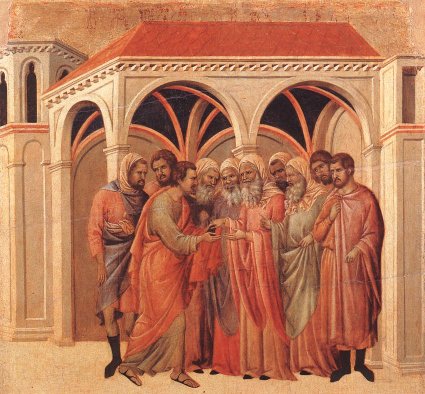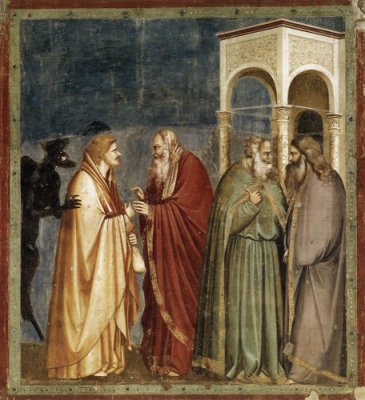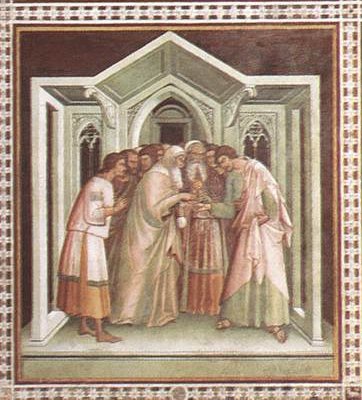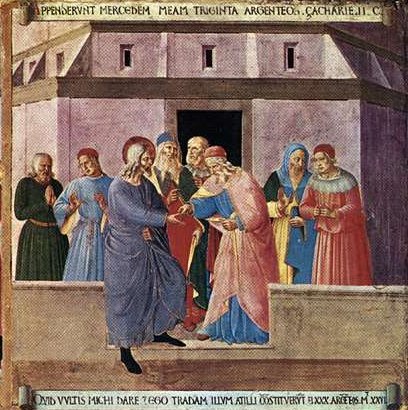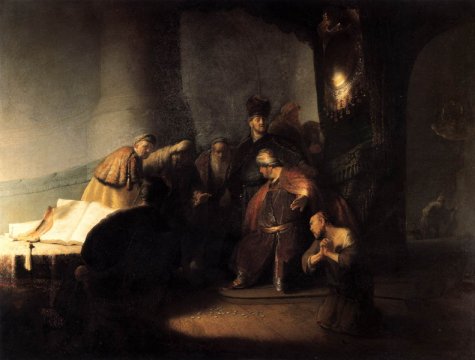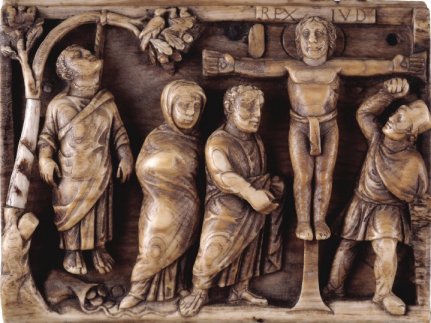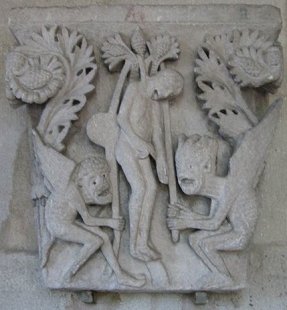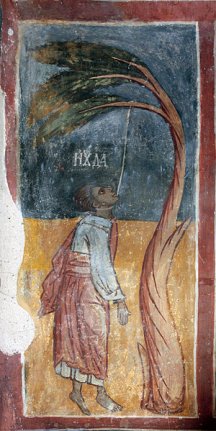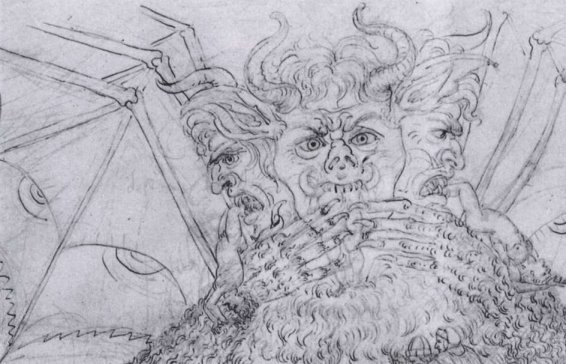|
The Passion of Christ |
|
|
The Betrayal of Judas |
|
|
Here's another
topic that scholars and theologians endlessly chew over. What were
Judas's motives? In John's Gospel, we are told that the decision was
apparently fired by the anointing of Christ with precious ointment,
which Judas declared was a waste of money. John makes it clear,
however, than he wasn't really concerned about the poor; he was a thief
and he wanted money for himself. Some academics suggest that Judas was disappointed with Jesus's unwillingness to take on the role of King of the Jews and incite rebellion. It has even been suggested that the name 'Judas' was invented to support this idea - Judas/Judea. Did Judas exist at all? Paul doesn't mention him. Some wonder about what Judas actually revealed to the High Priests. Would they really have paid Judas a very large sum of money simply to tell them where he was? It's true that they wanted to do this out of the public eye, but no doubt they had spies keeping an eye on such a dangerous character. Governments to this day are rather good at that. Bart Ehrman in Jesus Interrupted suggests that Judas betrayed secrets of Jesus's life and intentions - much more valuable. Perhaps most intriguing is the the idea that Jesus knew about Judas's betrayal in advance, because he had asked him to do it in order to fulfil the prophecy of his death and resurrection. Judas as loyal supporter rather than betrayer. So, leaving these ideas floating in the air, let's look at the story. The chronology is, as so often when we have four versions of events, confusing, but these are the main events found in paintings. 1. Judas's decision to betray Jesus when at the house of Mary and Martha. 2. Judas visits the High Priests. 3. Judas at the Last Supper. 4. Judas leads the High Priests to Jesus in the Garden of Gethsemane. 5. Judas returns the money to the High Priests. 6. The death of Judas. 1 is dealt with under the Raising of Lazarus the anointing of Christ.; 3 and 4 will be covered when we get to these events. So here I'll look at 2, 5 and 6. |
|
|
Judas visits the high priests. According to the story Judas visits them three times. The first time he makes the offer of betrayal, the second time he reveals Jesus's whereabouts and collects his thirty pieces of silver. Following the text of John (chapter 13 v. 27 - 30) this took place immediately after the Last Supper: And
after the sop Satan entered into him. Then said Jesus unto him, That thou
doest, do quickly. Now no man at the table knew for what intent he spake
this unto him. For some of them thought, because Judas had the bag, that
Jesus had said unto him, Buy those things that we have need of against the
feast; or, that he should give something to the poor. He then having
received the sop went immediately out: and it was night. |
|
|
|
|
|
|
|
|
On the third visit, overcome by remorse, Judas
returns the Money.
Then Judas, which had betrayed him, when he saw that
he was condemned, repented himself, and brought again the thirty pieces of
silver to the chief priests and elders, Saying, I have sinned in that I
have betrayed the innocent blood. And they said, What is that to us? see
thou to that. And he cast down
the pieces of silver in the temple, and departed, and went and hanged
himself. (Matthew 27 v 3 - 4) Early artists like those above did not paint this scene - they were probably more interested in Judas's guilt than in his repentance. It was left to Rembrandt to give it an airing. Here we see the thirty pieces of silver cast down on the floor of the temple and a bunch of rather indifferent looking high priests. |
|
|
|
|
|
The Death of Judas. As in Matthew above, the familiar story is that Judas hanged himself in the 'Potter's Field', land purchased by the High Priests with Judas's silver. This is not the only version of Judas's death. In Acts, there is a more gruesome description: Now this man purchased a field with the reward of iniquity; and falling headlong, he burst asunder in the midst, and all his bowels gushed out. And it was known unto all the dwellers at Jerusalem; insomuch as that field is called in their proper tongue, Aceldama, that is to say, The field of blood. There have been various attempts to reconcile these two stories, but religious art has preferred to avoid gushing bowels and stick to the hanging - though even that is a very rarely met with. |
|
|
|
|
|
The
image above may not look particularly special, but it shows one of the
most significant objects in all religious art. This ivory relief, now in the British Museum, shows the Death of Judas and the Crucifixion of Christ. It dates from around 420 - 430, and as such is probably the oldest extant image of the Crucifixion. I will come back to it when I get round to tackling crucifixion images. Two more images: |
|
|
|
|
| So that wraps it up for Judas. Well, not quite. This Botticelli drawing, based on Dante, shows what happened next . A three-headed Satan is chewing three of humanity's greatest villains; Cassius, Brutus, and Judas. | |
|
|
|
